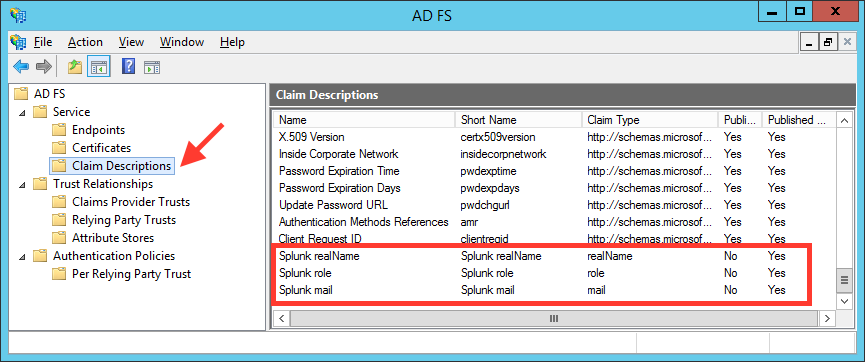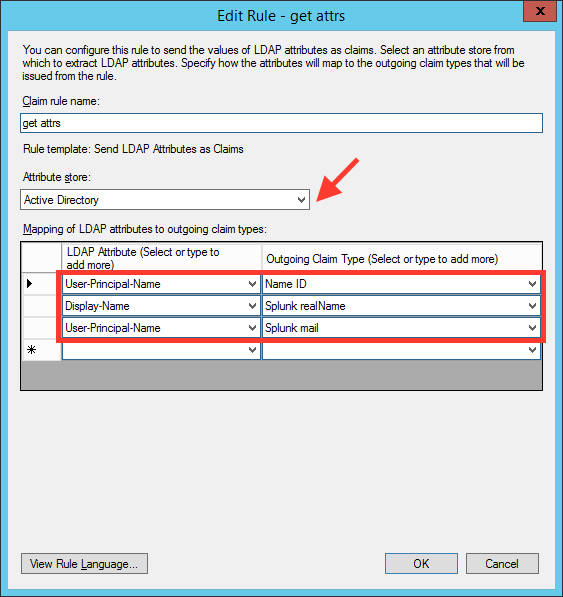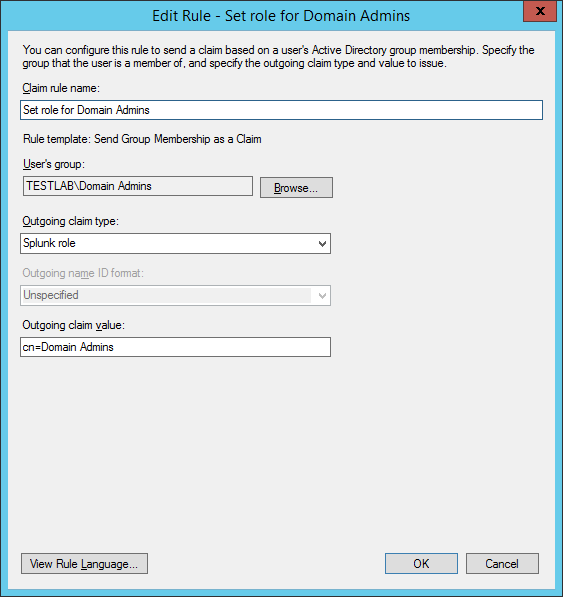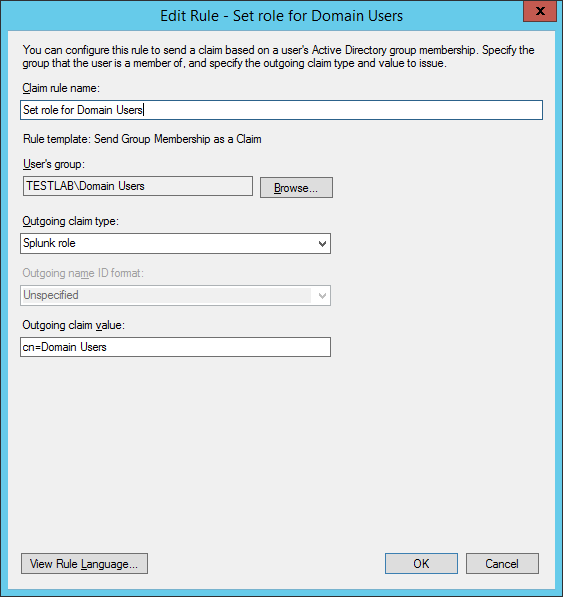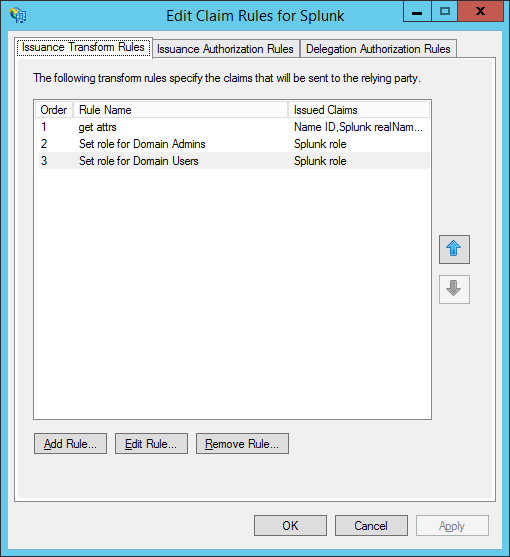Puppet module to deploy Splunk into any imaginable topology.
This Puppet module can be used to create and arrange Splunk instances into simple, distributed or clustered topologies. It does so with the following principles in mind:
Principles
- Splunk above Puppet. Puppet is only used to configure the running skeleton of a Splunk constellation. It tries to keep away from Splunk administration as much as possible. For example, why deploy Splunk apps to forwarders through Puppet if you can use Splunk's multi-platform deployment server?
- Power to the Splunkers. A Splunk installation should typically not be administered by the IT or IT-infra teams. This Puppet module should smooth the path to implementing segregation of duties between administrators and watch(wo)men.
- Secure by default.
- Splunk runs as user splunk instead of root.
- No services are listening by default except the bare minimum (8089/tcp)
- TLSv1.1 and TLSv1.2 are enabled by default
- Perfect Forward Secrecy (PFS) using Elliptic curve Diffie-Hellman (ECDH)
- Ciphers are set to modern compatibility
- Admin password can be set using its SHA512 hash in the Puppet manifests instead of plain-text.
- Supports any topology. Single server? Redundant multi-site clustering? Heavy forwarder in a DMZ?
Prerequisites
- A running Puppet master
- A running repository server with splunk and splunkforwarder packages. See below if you need help setting it up.
Splunk YUM repository (Red Hat based)
If you don't already have a local repository server, the quickest way is to install Apache on the Puppet master and have this serve the yum repository.
yum install httpdyum install createrepomkdir /var/www/html/splunkcd /var/www/html/splunk- download splunk-x.y.x.rpm
- download splunk-forwarder-x.y.x.rpm
createrepo .- make sure Apache allows directory index listing
- surf to http://your.repo.server/splunk and check if you get a directory listing
Then add something like this to every node definition in site.pp, and require it from the splunk class so it it evaluated before the splunk class.
yumrepo { "splunk":
baseurl => "http://your.repo.server/splunk",
descr => "Splunk repo",
enabled => 1,
gpgcheck => 0
}
Splunk APT repository (Debian/Ubuntu based)
If you don't already have a local repository server, the quickest way is to install Apache on the Puppet master and have this serve the APT repository.
apt-get install apache2apt-get install dpkg-devmkdir /var/www/html/splunkcd /var/www/html/splunk- download splunk-x.y.x.deb
- download splunk-forwarder-x.y.x.deb
dpkg-scanpackages . /dev/null |gzip -c > Packages.gz- make sure Apache allows directory index listing
- surf to http://your.rhel-repo.server/splunk and check if you get a directory listing
Then add something like this to every node definition in site.pp, and make sure to require these files from the splunk class so they are evaluated before the splunk class. Because the APT repository above isn't signed, puppet won't be able to install splunk or splunkforwarder, except when setting APT::Get::AllowUnauthenticated somewhere in /etc/apt/apt.conf.d/. You may have to run apt-get update before the Splunk repository is available in apt-get.
file { "/etc/apt/apt.conf.d/99allowunsigned":
ensure => present,
content => "APT::Get::AllowUnauthenticated "true";\n",
}
file { "/etc/apt/sources.list.d/splunk.list":
ensure => present,
content => "deb http://your.apt-repo.server/splunk ./\n",
}
Installation
- SSH to your Puppet master
cd /etc/puppet/modulespuppet module install jorritfolmer-splunkorgit clone https://github.com/jorritfolmer/puppet-splunk.git; mv puppet-splunk splunk- Create your Splunk topology, see below for examples.
Usage
To give this module a try, you don't necessarily have to setup a Certiticate Authority for the various SSL certificates that Splunk uses.
- By default Splunk already uses its own CA (1024 bits) that is used to create and sign the certificate for the 8089/tcp management port and 8000/tcp web interface: /opt/splunk/etc/auth/ca.pem. However, since everyone can grab the key from a Splunk trial download, it's an unlikely candidate for real production use.
- Because there is already a Puppet CA in place, this module reuses the client key (4096 bits) and client certificate signed by the Puppet CA.
By default, the Splunk module doesn't manage the state of the splunk service, except configure to start Splunk or Splunkforwarder at boot time. However, if you do want Puppet to interfere while performing a cluster rolling restart or an indexer restart, have a look at the service parameter.
Example 1:
Define a single standalone Splunk instance that you can use to index and search, for example with the trial license:
node 'splunk-server.internal.corp.tld' {
class { 'splunk':
httpport => 8000,
kvstoreport => 8191,
inputport => 9997,
}
}Example 2:
Extends the example above with a node that will run the Splunk universal forwarder. It uses the first server as Deployment Server (ds =>) where apps, inputs and outputs can be managed and deployed through Forwarder Management.
node 'splunk-server.internal.corp.tld' {
class { 'splunk':
httpport => 8000,
kvstoreport => 8191,
inputport => 9997,
}
}
node 'some-server.internal.corp.tld' {
class { 'splunk':
type => 'uf',
ds => 'splunk-server.internal.corp.tld:8089',
}
}Example 3:
One deployment/license server, one search head, and two indexers. Note that for the search head to add the indexer as its search peer, the indexer needs to be running before the search head manifest is executed. This means that you'll have to manage intra-node dependencies manually or through an orchestration tool like Terraform.
node 'splunk-ds.internal.corp.tld' {
class { 'splunk':
admin => {
# Set the admin password to changemeagain
hash => '$6$MR9IJFF7RBnVA.k1$/30EBSzy0EJKZ94SjHFIUHjQjO3/P/4tx0JmWCp/En47MJceaXsevhBLE2w/ibjHlAUkD6k0U.PmY/noe9Jok0',
fn => 'Deployment Server Administrator',
email => 'changemeagain@example.com',
},
# Enable the web server
httpport => 8000,
# Use the best-practice to forward all local events to the indexers
tcpout => [
'splunk-idx1.internal.corp.tld:9997',
'splunk-idx2.internal.corp.tld:9997',
],
service => {
ensure => running,
enable => true,
},
}
}
node 'splunk-sh.internal.corp.tld' {
class { 'splunk':
admin => {
# A plaintext password needed to be able to add search peers,
# so also make sure the indexer you're pointing to is running,
# you can remove this if everything is up and running:
pass => 'changemeagain',
hash => '$6$MR9IJFF7RBnVA.k1$/30EBSzy0EJKZ94SjHFIUHjQjO3/P/4tx0JmWCp/En47MJceaXsevhBLE2w/ibjHlAUkD6k0U.PmY/noe9Jok0',
fn => 'Search head Administrator',
email => 'changemeagain@example.com',
},
httpport => 8000,
kvstoreport => 8191,
# Use a License Master and Deployment Server
lm => 'splunk-ds.internal.corp.tld:8089',
ds => 'splunk-ds.internal.corp.tld:8089',
tcpout => [
'splunk-idx1.internal.corp.tld:9997',
'splunk-idx2.internal.corp.tld:9997', ],
# Use these search peers
searchpeers => [
'splunk-idx1.internal.corp.tld:8089',
'splunk-idx2.internal.corp.tld:8089', ],
# splunk must be running to be able add search peers,
# you can remove this if everything is up and running:
service => {
ensure => running,
enable => true,
},
}
}
node 'splunk-idx1.internal.corp.tld', 'splunk-idx2.internal.corp.tld' {
class { 'splunk':
admin => {
hash => '$6$MR9IJFF7RBnVA.k1$/30EBSzy0EJKZ94SjHFIUHjQjO3/P/4tx0JmWCp/En47MJceaXsevhBLE2w/ibjHlAUkD6k0U.PmY/noe9Jok0',
fn => 'Indexer Administrator',
email => 'changemeagain@example.com',
},
inputport => 9997,
lm => 'splunk-ds.internal.corp.tld:8089',
ds => 'splunk-ds.internal.corp.tld:8089',
# splunk must be running for it to be added as search peer,
# you can remove this if everything is up and running
service => {
ensure => running,
enable => true,
}
}
}Example 4:
A Splunk indexer cluster consisting of one deployment/license/searchhead server, a cluster master, and three cluster peers.
node 'splunk-sh.internal.corp.tld' {
class { 'splunk':
admin => {
hash => '$6$MR9IJFF7RBnVA.k1$/30EBSzy0EJKZ94SjHFIUHjQjO3/P/4tx0JmWCp/En47MJceaXsevhBLE2w/ibjHlAUkD6k0U.PmY/noe9Jok0',
fn => 'Search Head Administrator',
email => 'changemeagain@example.com',
},
httpport => 8000,
kvstoreport => 8191,
tcpout => [ 'splunk-idx1.internal.corp.tld:9997', 'splunk-idx2.internal.corp.tld:9997', ],
clustering => {
mode => 'searchhead',
cm => 'splunk-cm.internal.corp.tld:8089',
}
}
}
node 'splunk-cm.internal.corp.tld' {
class { 'splunk':
admin => {
hash => '$6$MR9IJFF7RBnVA.k1$/30EBSzy0EJKZ94SjHFIUHjQjO3/P/4tx0JmWCp/En47MJceaXsevhBLE2w/ibjHlAUkD6k0U.PmY/noe9Jok0',
fn => 'Cluster Master Administrator',
email => 'changemeagain@example.com',
},
httpport => 8000,
tcpout => [ 'splunk-idx1.internal.corp.tld:9997', 'splunk-idx2.internal.corp.tld:9997', ],
clustering => {
mode => 'master',
replication_factor => 2,
search_factor => 2,
}
}
}
node 'splunk-idx1.internal.corp.tld',
'splunk-idx2.internal.corp.tld',
'splunk-idx3.internal.corp.tld' {
class { 'splunk':
admin => {
hash => '$6$MR9IJFF7RBnVA.k1$/30EBSzy0EJKZ94SjHFIUHjQjO3/P/4tx0JmWCp/En47MJceaXsevhBLE2w/ibjHlAUkD6k0U.PmY/noe9Jok0',
fn => 'Cluster Peer Administrator',
email => 'changemeagain@example.com',
},
httpport => 8000,
inputport => 8000,
clustering => {
mode => 'slave',
cm => 'splunk-cm.internal.corp.tld:8089',
}
}
}Example 5
Enabling Single Sign-On through Active Directory Federation Services (ADFS) as an Identity provider:
node 'splunk-sh.internal.corp.tld' {
class { 'splunk':
...
auth => {
authtype => 'SAML',
saml_idptype => 'ADFS',
saml_idpurl => 'https://sso.internal.corp.tld/adfs/ls',
},
...
}
}
On the ADFS side:
-
Add a new Relying Party Trust, by importing the XML from
https://splunk-sh.internal.corp.tld/saml/spmetadata. Since this metadata is kept behind a Splunk login, you'll have to:- first browse to
https://splunk-sh.internal.corp.tld/account/login?loginType=Splunk - then browse to
https://splunk-sh.internal.corp.tld/saml/spmetadata, and copy/paste the SAML metadata XML to the Windows server. - import the SAML metadata XML from the relying party (Splunk) from a file
- first browse to
-
Add 3 new claim descriptions for:
- role
- realName
-
Add a new claim rule to map Active Directory attributes to the new claim descriptions created above:
-
Add a new claim rule to map Domain Admins to the
roleclaim attribute: -
Add a new claim rule to map Domain Users to the
roleclaim attribute:The rules overview should look something like this:
-
import the Splunk Root CA (/opt/splunk/etc/auth/cacert.pem) in the Trusted Root Certificates store of the Windows server,
-
If you're using your own certificates:
Set-ADFSRelyingPartyTrust -TargetIdentifier splunk-sh1.internal.corp.tld -EncryptionCertificateRevocationCheck none -
If you're using your own certificates:
Set-ADFSRelyingPartyTrust -TargetIdentifier splunk-sh1.internal.corp.tld -SigningCertificateRevocationCheck none -
Set-ADFSRelyingPartyTrust -TargetIdentifier splunk-sh1.internal.corp.tld -EncryptClaims $False -
Set-ADFSRelyingPartyTrust -TargetIdentifier splunk-sh1.internal.corp.tld -SignedSamlRequestsRequired $False, otherwise you'll find messages like these in the Windows Eventlog:System.NotSupportedException: ID6027: Enveloped Signature Transform cannot be the last transform in the chain.
For some reason the ADFS side doesn't like the AuthnRequests that Splunk sends, so signAuthnRequest = false is set in Splunk if you use saml_idptype => 'ADFS'.
Logout doesn't work by the way, throws this error:
Malformed SAML document(Assertion) received from IDP Please provide a diag for analysis.
Example 6
Use LDAP as an authentication provider, e.g. with Active Directory. The example below also maps 2 groups in AD to Splunk admin, and 1 group to Splunk user.
node 'splunk-sh.internal.corp.tld' {
class { 'splunk':
...
auth => {
authtype => 'LDAP',
ldap_host => 'dc01.internal.corp.tld',
ldap_binddn => 'CN=Splunk Service Account,CN=Users,DC=corp,DC=tld',
ldap_binddnpassword => 'changeme',
ldap_sslenabled => 0,
ldap_userbasedn => 'CN=Users,DC=corp,DC=tld',
ldap_groupbasedn => 'CN=Users,DC=corp,DC=tld;OU=Groups,DC=corp,DC=tld',
},
rolemap => {
'admin' => 'Splunk Admins;Domain Admins',
'user' => 'Splunk Users',
},
...
}
}
Example 7
Splunk search head clustering (SHC) not only requires configuration management, but also some orchestration to get it up and running.
Since the SH Deployer also has an active role in configuration management, you will have to take some extra steps in the right order to prevent Puppet and SH deployer from interferring with each other.
node 'splunk-sh1.internal.corp.tld',
'splunk-sh2.internal.corp.tld',
'splunk-sh3.internal.corp.tld' {
class { 'splunk':
...
shclustering => {
mode => 'searchhead',
shd => 'splunk-shd.internal.corp.tld:8089',
pass4symmkey => 'SHCl33tsecret',
label => 'My First SHC',
},
...
}
}
node 'splunk-shd.internal.corp.tld' {
class { 'splunk':
...
shclustering => {
mode => 'deployer',
pass4symmkey => 'SHCl33tsecret',
},
...
}
}
Steps:
- Do a puppet run on the SH deployer and SH cluster nodes, but don't start Splunk yet.
- Copy the $SPLUNK_HOME/etc/apps/puppet_* directories created by Puppet from a SH cluster node to etc/shcluster/apps/ on the SH deployer
- Start the SH deployer and the SH cluster nodes
- Perform a `splunk bootstrap shcluster-captain -servers_list "https://splunk-sh1.internal.corp.tld:8089,https://splunk-sh2.internal.corp.tld:8089,https://splunk-sh1.internal.corp.tld:8089" -auth admin:changemeagain
Parameters
Main splunk class
type
Optional. When omitted it installs the Splunk server type.
Use type => "uf" if you want to have a Splunk Universal Forwarder.
httpport
Optional. When omitted, it will not start Splunk web.
Set httpport => 8000 if you do want to have Splunk web available.
kvstoreport
Optional. When omitted, it will not start Mongodb.
Set kvstoreport => 8191 if you do want to have KVstore available.
inputport
Optional. When omitted, it will not start an Splunk2Splunk listener.
Set kvstoreport => 9997 if you do want to use this instance as an indexer.
tcpout
Optional. When omitted, it will not forward events to a Splunk indexer.
Set tcpout => 'splunk-idx1.internal.corp.tld:9997' if you do want to
forward events to a Splunk indexer.
splunk_os_user
Optional. Run the Splunk instance as this user. Defaults to splunk
splunk_bindip
Optional. Bind to this specific IP instead of 0.0.0.0
splunk_home
Optional. Used if you're running Splunk outside of /opt/splunk or /opt/splunkforwarder.
lm
Optional. Used to point to a Splunk license manager.
ds
Optional. Used to point to a Splunk deployment server
ds_intermediate
Optional. Used to configure the deployment server as a deploymentclient. This is useful if you want to retain one central deployment server instead of multiple, for example one for each DMZ. Defaults to undef.
repositorylocation
Optional. Used to configure the location on the deployment client where the
incoming apps from the deployment server are stored. Use master-apps or
shcluster/apps if you want to use the deployment server to also deploy to
intermediate locations on the cluster master or search head deployer.
phonehomeintervalinsec
Optional. Unsed to configure the phonehomeinterval of the deploymentclient. Defaults to undef.
sslcompatibility
Optional. Used to configure the SSL compatibility level as defined by Mozilla Labs. Defaults to "modern" compatibility. Set to "intermediate" or "old" if you have older Splunk forwarders or clients
admin
Optional. Used to create a local admin user with predefined hash, full name and email This is a hash with 3 members:
hash(SHA512 hash of the admin password)pass(Plaintext password, only used for search heads to add search peers in distributed search)fn(Full name)email(Email address)
service
Optional. Used to manage the running and startup state of the Splunk/Splunkforwarder service. This is a hash with 2 members:
ensure(not enabled by default)enable(defaults to true)
searchpeers
Optional. Used to point a Splunk search head to (a) Splunk indexer(s)
clustering
Optional. Used to configure Splunk indexer clustering. This is a hash with 4 members:
mode(can be one ofmaster,searchhead,slave)replication_factorsearch_factorcm(points to cluster master in case of searchhead or slave)
shclustering
Optional. Used to configure Splunk search head clustering. This is a hash with 4 members:
mode(can be one ofsearchhead,deployer)replication_factorshd(points to search head deployer, but see caveat in Example 7)
useACK
Optional. Used to request indexer acknowlegement when sending data. Defaults to false.
version
Optional. Specify the Splunk version to use.
For example to install the 6.2.2 version: verion => '6.2.2-255606'.
auth
Optional. Used to configure Splunk authentication. Currently supports 'Splunk' (default) 'SAML' and 'LDAP'. This is a hash with the following members:
authtype(can be one ofSplunk,LDAP,SAML)saml_idptype(specifies the SAML identity provider type to use, currently only supportsADFS)saml_idpurl(specifies the base url for the identity provider, for ADFS IdP's this will be something like https://sso.corp.tld/adfs/ls )ldap_hostldap_binddnldap_binddnpasswordldap_userbasednldap_groupbasednldap_sslenabledldap_usernameattributeldap_groupmemberattributeldap_groupnameattributeldap_realnameattribute
rolemap
Optional. Specifies the role mapping for SAML and LDAP Defaults to:
{
'admin' => 'Domain Admins',
'power' => 'Power Users',
'user' => 'Domain Users',
}
Compatibility
Requires Splunk and Splunkforwarders >= 6.2.0.
However, if you still have versions < 6.2 , pass sslcompatibility => 'intermediate'.
If you have version >= 6.2.0 servers but with stock settings from a previous Splunk installation, also pass sslcompatibility => 'intermediate' in the universal forwarder declaration, otherwise the SSL connections to the deploymentserver will fail.
Changelog
2.1.1
- Improved search head clustering (SHC) support: Puppet now only places the initial SHC node configuration, and won't touch it afterwards. This allows the SH deployer to take over after initial configuration. A staging SHC instance is no longer necessary.
- Improved search head clustering (SHC) support:
splunk init shclusteris no longer necessary, onlysplunk bootstrap shcluster-captain
2.1.0
- Added search head clustering (SHC) support, although only useful for staging purposes due to the overruling nature of the search head deployer (SHD)
- Added support to reuse Puppet certs from /etc/puppetlabs/puppet/ssl whenever commercial Puppet is used.
2.0.0
- Moved Splunk configuration out of etc/system/local to individual Splunk config apps
- Add LDAP authentication support
1.0.9
- Added phonehomeintervalinsec parameter to configure phoneHomeIntervalInSec for the deploymentclient
1.0.8
- Improved adding search peers
- Added class containment, to properly support
require =>from other resources or classes. This add a dependency on puppetlabs-stdlib.
1.0.7
- Added rpsec tests
- Added github->travis-ci integration
- Fixed issues for Puppet 2.7
1.0.6
- Add SAML authentication support through ADFS as IdP
1.0.5
- Specify IP to bind to
1.0.4
- Optionally specify Splunk version to install
- Merged PR #1 from @timidri
1.0.3
- Added
ds_intermediateparameter to create a deployment server that can deploy apps from an another upstream deployment server.
1.0.2
- Added
useACKparameter to manage indexer acknowledgement - Updated README with Debian / Ubuntu prerequisites.
1.0.1
- Added
serviceparameter to manage start and running state of the Splunk or Splunkforwarder service.
1.0.0
Initial release:
- License master
- Splunk web
- Standalone search head
- KVstore
- Standalone indexer
- Deployment server
- Deployment client
- Distributed search
- Forwarding with load-balancing
- Data input with SSL
- Index clustering: cluster master
- Index clustering: cluster peer
- Index clustering: search head
Roadmap
- Distributed Management Console
- Data Collection Node
- Add defined type so multiple splunk instances can be deployed on a single system
Out-of-scope
- Search head load-balancing
- Search head pooling
- Managing apps or inputs on Splunkforwarders, see principle 1.




